Orrin Grey's Blog: Shovel Murders & Monologues
November 17, 2025
Kind Words
“On the level of Matheson, Grey is one of the best living short fiction writers of our time.”
That quote, from a recent Goodreads review of my 2022 collection How to See Ghosts & Other Figments, obviously made me very happy – especially as I think How to See Ghosts is the most underread of my collections so far, probably due in no small part to coming out in the midst of the pandemic, when everything was very… challenging.
I love getting reviews in those few publications that still do book reviews, on big websites, and so on. Of course I do. Who doesn’t? But I think what I love best is seeing a reader really connect with one of my books, whether that’s in the form of a Goodreads or Amazon review, by sending me an email directly, or however I may encounter it.
Lately, a couple of my more recent books have enjoyed some very kind and insightful reviews that I wanted to draw a little attention to here, despite having already linked them on social media.
Dark Intersections, the blog of Lyana Rodriguez, has been a longtime booster of my work, starting off with my nonfiction Monsters from the Vault and Revenge of Monsters from the Vault volumes, so it only makes sense that they would leave a glowing (no pun intended) review of Glowing in the Dark, my latest nonfiction collection.
My most recent book, Notes from Underground: The Hollow Earth Story Cycle just came out last month, so it hasn’t received a whole lot of reviews just yet. The most amusing is probably this one on Goodreads: “I finally read the Dostoevsky classic Notes from Underground. Who knew that Russian scholars were believers in the Hollow Earth theory?”
This relative paucity meant that I was particularly excited to see a review of it pop up in a place I was previously unfamiliar with: The Blog Without a Face. That the review in question was extensive, insightful, and seemed to really understand many of the book’s themes was an absolute bonus.
The reviewer also calls me “the nice ghoul of weird fiction, the guy who loves rubber-suit monsters and midnight movies yet writes with a librarian’s care for lore.” Which I obviously appreciate.
Writing is an inherently lonely vocation. We write to write, but most of us also write to be read. It’s nice when I’m reminded that people occasionally read my books, and nicer still when they seem to really get what I’m trying to do.
October 22, 2025
We’ll Send Him Spooky Movies
If you’re like me, and I know I am, you spend an inordinate amount of your time watching old episodes of Mystery Science Theater 3000. Specifically, for me, Joel, Mike, and the ‘Bots have become a part of my nightly bedtime ritual. Which means that I’ve watched many of the episodes so many times that the wheels have come off.
Nonetheless, I have my rules about viewing when it comes to the Halloween month, which means that I try to make even my forays to the Satellite of Love as thematic as possible. To that end, I’ve assembled a few classic episodes of Mystery Science Theater 3000 that I think make suitable Halloween season viewing…
The Killer Shrews (Season 4, Ep 7)
There’s a dark and stormy night. There are dogs wearing shrew costumes. Sure, it’s not the Halloween-iest of settings, but there were plenty of old creature feature trailer compilations that used elements from The Killer Shrews, which makes it feel maybe more seasonal than it actually is.
Werewolf (Season 9, Ep 4)
When you think Halloween you think… Arizona? The warm weather and occasional bright sunshine of Werewolf may not make for ideal October ambiance, but the low-rent werewolf costumes and impenetrable night shots certainly do.
Tormented (Season 4, Ep 14)
MST3K regular and giant afficionado Bert I. Gordon does his best William Castle impersonation in this story of a man tormented by the ghost of his dead mistress. It’s got some spooky shenanigans and some hip lingo… just enough to make it a good fit for Halloween.
The Undead (Season 8, Ep 6)
None other than Roger Corman helms this surprisingly good and delightfully campy tale of past lives as a prostitute in the 20th century relives her experiences as a maiden accused of being a witch in generic medieval times. Absolutely Halloween-y for all sorts of reasons, including a brief and pointless dance sequence in a graveyard.
Zombie Nightmare (Season 6, Ep 4)
I mean, it’s called Zombie Nightmare. That’s a good start, right? There are plenty of murky night shots, a soundtrack full of rock artists, an appearance by Jon Mikl Thor, and Adam West gets dragged into a grave by a corpse.
The Unearthly (Season 3, Ep 20)
John Carradine, Tor Johnson, and the “Edgar Allan Poe Marching Band” ensure that this is one of the spookier episodes of MST3K, nevermind that it takes place almost entirely in a handful of blandly decorated rooms where nothing really happens.
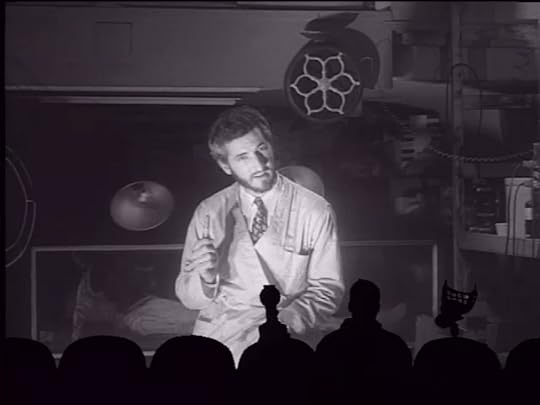
The Dead Talk Back (Season 6, Ep 3)
Look, it’s my list, and this might just be my favorite movie they ever showed on MST3K. Sure, it ultimately becomes just a naturalistic crime film, but Henry Krasker’s paranormal gobbledygook is as Halloween-y as it comes.
Hobgoblins (Season 9, Ep 7)
They showed a lot of low-rent monster movies on MST3K. I can’t explain why, but Hobgoblins just feels more Halloween-y than most of them.
Being from Another Planet (Season 4, Ep 5)
We’re getting into the home stretch now. Being from Another Planet not only features an alien mummy, but there’s also a mummy-themed costume party that could absolutely be a Halloween party if you squint. An even better reason for it to be on this list, however, is the ‘Bots putting on their own haunted house for Joel during one of the host segments.
Bride of the Monster (Season 4, Ep 23)
Bela Lugosi and Tor Johnson (again) star in Ed Wood’s delightfully atmospheric homage to the Universal monster movies of yesteryear – replete with all the old dark houses, mad science labs, and bolts of fake lightning you can conjure on an Ed Wood budget.
The Screaming Skull (Season 9, Ep 12)
Somewhat surprisingly, the original crew of the Satellite of Love never actually did a William Castle movie – but this might be as close as they ever came. The Screaming Skull is basically a William Castle movie where nothing ever happens, but that’s still close enough.
I Was a Teenage Werewolf (Season 8, Ep 9)
As far as I know, this is the only movie that classic MST3K ever did that actually takes place around Halloween – complete with a teen Halloween party. So, you might expect it to be in the top spot on my list. But I think there’s one other that captures the season better…
Samson vs. the Vampire Women (Season 6, Ep 24)
It’s got vampires. It’s got campy gothic atmosphere. It’s got a fancy dress party. And the protagonist runs around in a mask literally all the time. What could be more perfect for the vibes of Halloween than this overdubbed version of Santo vs. las Mujeres Vampiro that is also the last appearance of TV’s Frank on the show.
Most of these are available to watch for free at the Gizmoplex, which is the absolute best way to watch classic MST episodes short of having them yourself. Those that aren’t are on YouTube.
Hopefully, they’ll make a good background for your Halloween party, or something for you to watch as you end a night of scary movies. We’ve still got a few days left until Halloween, so you may hear from me again before the big day, we’ll see…
October 16, 2025
Two Came for Halloween
For those who haven’t been following along, I have not one but two books that came out this month, both of which are currently available – one of them for a very limited time!
It all started when Patric Bates, an artist whose work I really love, posted a painting of some ghosts going to a movie called The Witch and the Pendulum. That began a conversation that ended with me writing two new short stories based on titles for fake movies that Patric had concocted in his paintings, as well as a brief framing story to wrap them both up. Patric then paired that with some of his art to create the Starlight Theater Halloween Double-feature, a zine boasting new stories by me and incredible art by him.
We initially released a limited, numbered run of 50 copies. They sold out in one weekend. So, by popular demand and for those who missed out the first time, we’ve put together just a few more for a second print run… and when it’s gone, it’s gone.
For now, though, it isn’t gone quite yet. So, get yours while you can.
The two new stories are classic-style ghostly tales that could have been horror movies from the ’60s, one about witches and pendulums and sinister manor houses and plants, one about an aquarium that may be haunted by an unlikely ghost. I’m also particularly happy with how the framing story came out. And, of course, Patric’s art is always worth the price of admission by itself – follow him on Bluesky, if you don’t already.
The Starlight Theater Halloween Double-feature is something that came together somewhat unexpectedly, a personal project and a labor of love made just for Halloween. My other book this month is something that’s been in the works a lot longer…

Notes from Underground: The Hollow Earth Story Cycle marks my fifth solo book from Word Horde, and yet Ross keeps putting up with me and making me look good. As those who have been reading my Hollow Earth Expeditions for the past few weeks already know, this book was a big departure for me, in that it is comprised of a “story cycle” of linked tales, making it something between a short story collection and a novel.
It’s also a bit of a departure for Word Horde, as it’s available in a trim size that they haven’t done before and I have to say, I got my author copies in the mail a couple of days ago, and these things really feel great to hold!
Notes from Underground hit shelves the day before yesterday, and has already been finding its way into the hands of those who pre-ordered. I want to thank everyone who did, everyone who reads, reviews, orders, posts pictures, and so on of this book. All my books are special to me, and this one is no exception, and every bit of word of mouth helps indie authors like myself write more books and keep doing what I love.
If you didn’t already pre-order, well, Notes from Underground is a lot less limited than the Starlight Theater Halloween Double-feature, but there’s still no better time than the present to pick up a copy. Or, if you’re a bit short yourself at the moment, request it from your local library. That honestly helps everybody.
At this point, having a new book out around this time of year has practically become a tradition. As Ross said on Facebook, “It just wouldn’t be Halloween without a new collection from Orrin Grey.” And I’m very pleased, this year, to have not one but two spooky books available to make your Halloween eerie.
I’ve written a lot about both of them, and I’ll likely write more, but for now, they’re both available (for an extremely limited time, in one case) and they’re both good reads for the spooky season. I hope that one or both of them can haunt your house this Halloween.
October 14, 2025
Hollow Earth Expeditions: Inside at Last
It’s publication day! Notes from Underground arrives in bookstores today, and should be landing in the hands of those who pre-ordered any day now, if it hasn’t already. Among other things, that means this will be our last Hollow Earth Expedition, and that you’re getting it a day early. I hope you’ve enjoyed this deep dive into the subterranean world, and the myriad influences that informed the writing of Notes from Underground. And, of course, I hope that you enjoy the book itself even more!
For those who are just now arriving with us in the interior world for the first time, Notes from Underground is both like and unlike other books I’ve published in the past. In some ways, it’s similar to my earlier short story collections, in that it is made up of six short stories and one novelette, all of which can be read on their own. In other ways, it’s very different, as each of those seven stories is part of a linked “story cycle,” that paints a unified picture when all the stories are gathered together, as they finally are in Notes from Underground.
To help signal this difference, Ross Lockhart, my publisher at Word Horde, hired Matthew Revert to create and design the cover, which is a major departure from any of my previous Word Horde titles (all of which bore cover illustrations by either Nick Gucker or Yves Tourigney).

Notes from Underground also has different proportions than my previous books, measuring 4.25 by 7 inches. Small enough that you can perhaps tuck it in your pocket to take with you on your own subterranean adventures.
Books like this are often seen as the product of a single imagination and, to some extent, that’s true. But no book ever comes to life entirely through the work of its author. As always, I am indebted to the patience and support of my friends and loved ones, as well as Ross at Word Horde, who has helped to shepherd many of my books into the hands of readers.
I’m also grateful to Trevor Henderson, old friend, fantastic artist, and author of Scarewaves, who gave Notes from Underground a phenomenal blurb:
“Orrin Grey uses the fantastic imagery of the high strange and the charming weirdness of pulp adventure stories as gateways to deeper, murkier depths. He tunnels deep into the honeycombed caverns of his characters’ interior lives and shines a light on what lurks there. A wonderful collection quite unlike any I’ve read before.”
“Quite unlike any I’ve read before” is a sentiment that I hope a lot of you will share after you’ve read Notes from Underground – even if you’re already a fan of some of my earlier books.
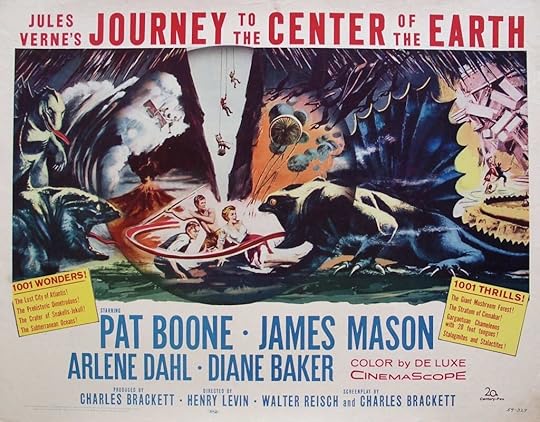
In previous Hollow Earth Expeditions, I’ve discussed how my own conception of the Hollow Earth, as deployed in these tales, took shape, and how the interior world of the stories reflects (and, indeed, in some ways encompasses) the interior worlds of the characters experiencing it. This style of heavily recursive storytelling is something I hadn’t really experimented with before, but I hope that my metaphysical rooting around proves entertaining, or perhaps even enlightening.
I’ve talked about the various inspirations that went into writing Notes from Underground, from Edgar Rice Burroughs to Clive Barker to Mike Mignola and beyond. There are plenty of others that I didn’t get to – including ones that I’m probably not even aware of.
One non-obvious inspiration likely came in the form of films noir, particularly those fringe cases that deal with carnival barkers, revival tent preachers, mentalists, and psychics – both real and frauds. There’s a certain fatalism that is tied up with the noir, and a similar sense permeates many of the stories here, even while my own fatalism has a note of potential transcendence buried deep within it.
A few of the films that might have been in the back of my mind while concocting some of these stories include the classic Nightmare Alley (1947), the underseen Night Has a Thousand Eyes (1948) – with its suggestion that being able to see the future may not mean that you can actually do anything about it – and even Lord of Illusions (1995) and X: The Man with the X-Ray Eyes (1963), which aren’t strictly films noir but also… aren’t they?
If you’ve already pre-ordered a copy of Notes from Underground, I want to say thank you, from the very deepest interior of my heart. And if you haven’t ordered your copy yet, now’s a perfect time. With any luck, you’ll enjoy these trips to the inside of the Hollow Earth – and the insides of these characters. And who knows? Perhaps Notes from Underground will be what you need to find your own Symmes’s Hole, by which to get at the inside at last…
“Nothing lasts forever, not even forever.”

October 8, 2025
Hollow Earth Expeditions: The King of Fear
I like to think that the stories in Notes from Underground contain more melancholy than terror, but this is still a horror collection, and these are still horror stories. You don’t have to take my word for it, either – one of them made it all the way into Ellen Datlow’s Best Horror of the Year.
We’ve already talked a bit about Clive Barker, who was one of the main horror inspirations of Notes from Underground, and another one is mentioned in the dedication. It’s been years since I read Brian McNaughton’s Throne of Bones, and its past time for me to revisit it, but when I did read it, it left a big impression.
Taking Lovecraft’s ghouls and transforming them into grotesque, tragic, pathetic, grandiose, and highly sexual creatures, Throne of Bones, like Notes from Underground, is made up of linked short stories that, taken together, form something more than the sum of their parts.
It was a transformative read for a younger me, who had never encountered anything else quite like it. How much of that is actually in Notes from Underground is difficult to say – I am not an especially horny writer, after all, and Throne of Bones is, if nothing else, a very horny book. But I think the tragedy of McNaughton’s ghouls is definitely something that is hanging around my own spidery variations.

It would also not do to fail to mention Mike Mignola’s take on the Hollow Earth, which certainly informed my own, even while the two are, in many ways, very different. Originally appearing in the pages of his B.P.R.D. series, Mignola’s Hollow Earth draws heavily from Edward Bulwer-Lytton’s 1871 novel The Coming Race, which I have never read.
I think the main things that spread from Mignola’s Hollow Earth to my own were the idea of a formerly Utopian locale in decline, and the ways in which Mignola’s Hollow Earth extends its tendrils (mainly, in his case, in the form of Vril energy) throughout so much of the rest of his Hellboy-adjacent titles.
Frankenstein’s creation also makes his way into Mignola’s Hollow Earth, in a move that seems calculated as a nod to Howard Waldrop and Steven Utley’s 1977 story “Black as the Pit, from Pole to Pole,” in which the Frankenstein monster finds a polar opening into the Hollow Earth and subsequently travels through the entire globe, encountering a variety of monstrous creatures and weird scenarios before emerging in Antarctica.
The story is phenomenal and absolutely worth seeking out. To the best of my knowledge, it was most recently reprinted in Ellen Datlow’s Lovecraft’s Monsters.

The horrors that the Frankenstein creature finds underground certainly influenced my own Hollow Earth, just as Mignola’s similar adventures did. More than that, however, I think I took from Mignola’s Hollow Earth a feeling of the cyclical nature of the place, as, in his conception, the early Utopian civilization of the Hollow Earth falls to ruin, only to be reborn after the destruction of the surface, as the final humans take refuge once more within.
Is my Hollow Earth quite so hopeful? Read Notes from Underground next week and decide for yourself…
October 1, 2025
Hollow Earth Expeditions: A Warning to Future Man
While each of the stories in Notes from Underground is linked in some way with my conception of the Hollow Earth, not all of them take place within it, or even adjacent to it. Some involve other phenomena that merely intersect with the Hollow Earth, including two stories preoccupied with a “post-human beetle race” briefly mentioned by H. P. Lovecraft in The Shadow Out of Time.
“After man there would be the mighty beetle civilization, the bodies of whose members the cream of the Great Race would seize when the monstrous doom overtook the elder world.”
The first story drawn from that altogether brief quotation actually came about before I ever knew that what I was writing was a series of linked stories – or that they would have anything to do with the Hollow Earth! Sometime around 2015, Ross Lockhart approached me to contribute a story to the anthology Cthulhu Fhtagn!
By that time, I had already written who knows how many Lovecraft-inspired stories and pastiches – and that’s not even touching upon how many others had been penned by other writers over the years. What, I wondered, could I possibly contribute to an expressly Lovecraft-themed anthology, without any other trappings or diversions, to give it a sheen of novelty?
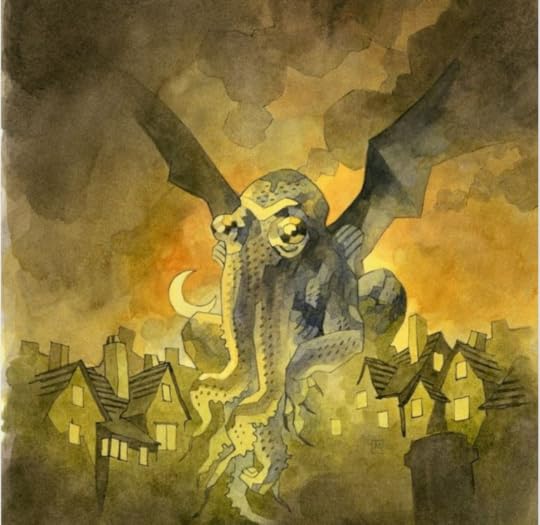
I settled upon that quote about the “post-human beetle race.” I had always liked the idea, and I remembered something not dissimilar in H. G. Wells’s The Time Machine, in which the narrator hurls himself so far into the future that the Earth’s sun is dying. There, on a desolate beach, he encounters not beetles but giant crabs.
“Far away up the desolate slope I heard a harsh scream, and saw a thing like a huge white butterfly go slanting and fluttering up into the sky and, circling, disappear over some low hillocks beyond. The sound of its voice was so dismal that I shivered and seated myself more firmly upon the machine. Looking round me again, I saw that, quite near, what I had taken to be a reddish mass of rock was moving slowly towards me. Then I saw the thing was really a monstrous crab-like creature. Can you imagine a crab as large as yonder table, with its many legs moving slowly and uncertainly, its big claws swaying, its long antennae, like carters’ whips, waving and feeling, and its stalked eyes gleaming at you on either side of its metallic front?”
(And after all, what catalogue of Hollow Earth influences would be complete without a mention of The Time Machine, whose subterranean Morlocks may not inhabit a Hollow Earth proper, but nonetheless cast their shadow over every cadre of industrious monsters who dwell underground?)
All of this was in my head as I wrote “The Insectivore,” but it wasn’t until later, when I was writing “Veteran of the Future Wars,” with its exploration of the various eras of Earth’s history and future, that I realized how this coleopteran race was linked to my interpretation of the Hollow Earth.
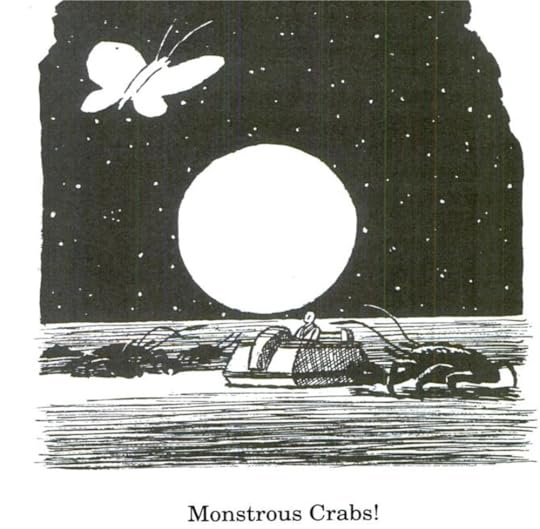
As I already mentioned, the Hollow Earth in Notes from Underground is a space as much metaphysical as physical. Notably, it is a place that touches all points in time at once. An eternal realm that is nonetheless subject to entropy and decay. Meaning that the spider-like ghouls who “currently” inhabit my Hollow Earth can go to war with the “post-human beetle race” who will claim the surface after humanity has died out due to climatic disaster.
Of course, while I am generally reluctant to write actual Mythos tales, “The Insectivore” and “Veteran of the Future Wars” are far from the only times when my work in general and the stories in Notes from Underground in particular brush up against the work of the Old Gent from Providence. Whatever your opinion of Lovecraft, the industry that has grown up around his legacy and that of writers like him has proven my bread and butter for many years, and I’ve contributed to as many Lovecraft-adjacent anthologies as not.
In point of fact, three of the stories in Notes from Underground were written for Lovecraft-themed anthologies of one kind or another. Besides “The Insectivore,” which found its first home in Cthulhu Fhtagn! from Word Horde and “Veteran of the Future Wars,” which was written for Tales from Arkham Sanitarium, published by Dark Regions and now seemingly out of print, “Pandora,” the story that closes out Notes from Underground and ties all of its many threads together, was written for and published in New Maps of Dream, an anthology of stories inspired by Lovecraft’s Dreamlands cycle, put out by PS Publishing and edited by Cody Goodfellow and the late Joseph S. Pulver, Sr.
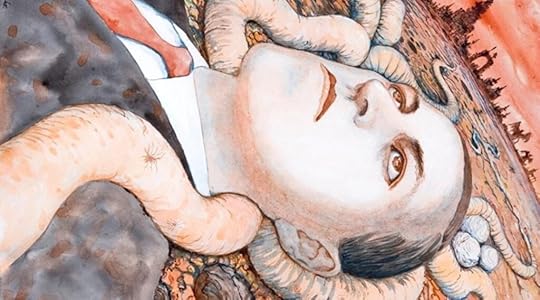
You won’t find many tentacles in Notes from Underground, but you will find plenty of time slips, strange cults, body swaps, ghoulish visitations, and views of a world – both interior and exterior – that is much larger and stranger than we can imagine. That probably owes at least a little debt to Lovecraft, like it or not.
September 27, 2025
Rushing the Halloween Season
It all started when artist Patric Bates posted a watercolor painting to Bluesky entitled “Ghost Theater,” depicting several ghosts going to see a movie called The Witch and the Pendulum. I had already been following Patric for some time, after becoming enamored with his art almost immediately upon seeing it, and I was struck by the evocative movie title, which called to mind Roger Corman’s Technicolor Poe adaptations.
I replied to Patric something to the effect that I needed to write a story using that title, and this began a back-and-forth during which he revealed that he had used the made-up title (along with a few others) several times in his various paintings, and had actually created a fictional double-bill of The Witch and the Pendulum and Terror Aquarium, even going so far as to draft up a flyer for the imaginary program.
In the course of the conversation, we both struck upon an idea. What if I wrote both “films” as short stories, and then combined them together with a brief framing story about watching the films in his proposed double-feature. Then, we could release the whole thing as a zine, accompanied by some of his wonderful watercolor illustrations, and split the profits.

Inspiration can be a hell of a thing, and it was all finished faster than I think either of us imagined. The result is the Starlight Theater Halloween Double-feature, a brand-new zine released just in time for Halloween, written by yours truly and illustrated by Patric Bates.
The zine features two entirely new short stories by me, each of which can be read as standalones, along with a framing story about two girls who meet at the eponymous double-feature – for what may be the last time.
At the time of this writing, the Starlight Theater Halloween Double-feature is the only place you can get any of these stories, which are all brand-new to this zine. It’s available in an initial print run of only 50 numbered copies, and they’re already going fast. Also, if you order this weekend (September 27-28) you’ll get a treat bag filled with Halloween goodies along with your order!
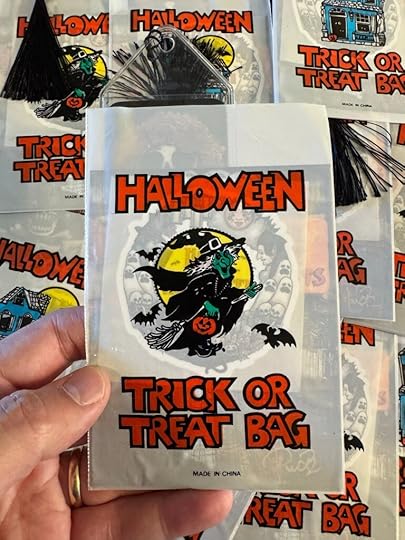
We’re not ruling out future printings, but we’re not guaranteeing them, either, and this will be the only numbered, first-edition print run. Along with two full stories by me that are available nowhere else and a framing story, you’ll get several wonderful and seasonal paintings by Patric Bates which, I promise, are worth the price of admission by themselves.
I’m so excited about this project. I’ve really been inspired by Patric’s paintings and I’m thrilled to be collaborating with him on this. I think my readers will love it, and I’m very proud of the stories I’ve put together for the Starlight Theater Halloween Double-feature. I can’t wait for you to read them!
If you’ve always wanted to go to a theater full of masked weirdos to watch a perfectly Halloween-y double-bill, you can’t get much closer to that than this new zine. But the initial print run is selling fast, and you’ll want to order soon, anyway, so you can get it in time for Halloween!
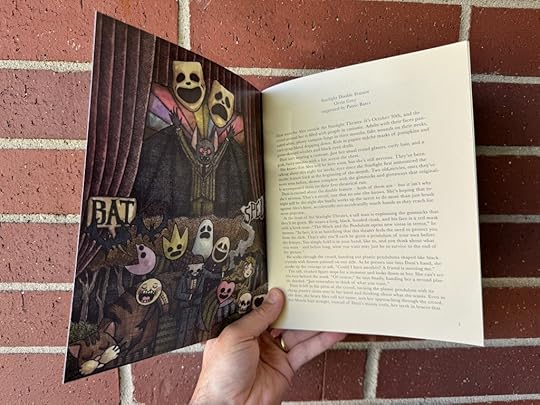
September 24, 2025
Hollow Earth Expeditions: Solid All the Way Through
“The audience knows the truth. The world is simple, miserable, solid all the way through. But if you can fool them, even for a second… then you can make them wonder. And you get to see something very special.”
The Prestige (2006)
The second of the two epigraphs in Notes from Underground comes from Christopher Nolan’s 2006 film about dueling Victorian stage magicians, The Prestige. It’s a flick I really love, even though I am often lukewarm on Nolan’s movies. There are quite a few reasons for this, besides that I am just a sucker for the trappings of stage magicians.
There’s very little to do with the Hollow Earth in The Prestige, but there is the above quote from the movie, which captures the other major theme that I wanted to explore in Notes from Underground.
If the Walden quote was about the Hollow Earth being a metaphor for our own interiority, then this one is about exploring the idea that it would be worth it to learn that there was real magic in the world, even if that revelation was frightening or painful.
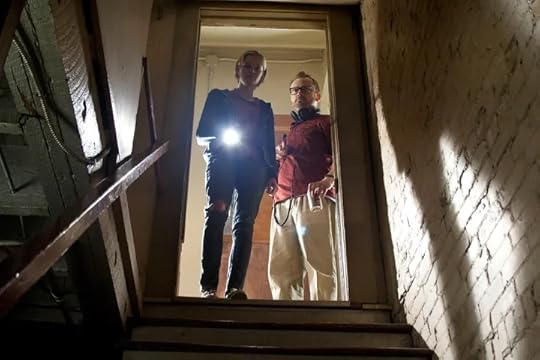
For this, as I often am, I am indebted to a review that Joey Comeau wrote many years ago for Ti West’s The Innkeepers (2011) – another movie I love from a director I’m generally not so fond of. While describing the lure of being scared, and playing Bloody Mary, Comeau writes:
“There’s something really satisfying about that desire to terrorize yourself, because it also feels like it will be worth it if those bloody fingers come through the mirror and wrap around your throat. The world will be so much more magical and interesting, and so you kind of hope that it does work.”
As I’ve said elsewhere, if my fiction has a central thesis statement, that might be it.
In The Prestige, a similar sentiment takes a slightly different form as one magician explains to another that the audience wants to be fooled. They want that second of uncertainty, of wonder, because without it the world is “simple, miserable, solid all the way through.”
It was that “solid all the way through” that made me link this desire with the Hollow Earth. After all, what is the opposite of “solid all the way through” if not hollow? And, going back to my earlier statement about dinosaurs at the center of the earth, could I write a suite of stories in which the Hollow Earth exemplified that longing for a moment of wonder – even when it was painful, even when it was terrifying?
I think this was the initial building block that led to my own Hollow Earth being a place as much metaphysical as physical. A world that both exists and doesn’t, that is eternal and perishing, that touches all points in time and occupies none of them.
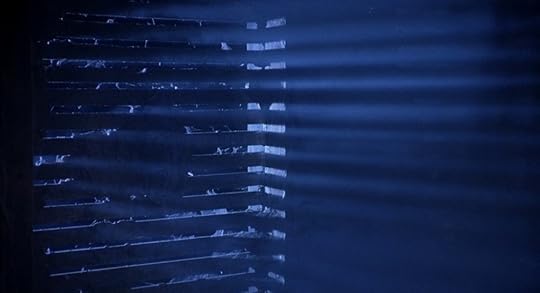
There are moments in my story “Hollow Earths” that explore another quote, this one from Clive Barker, explaining the “ambience [that] is essentially ‘Gothic’ in tone” of Hellraiser, where “even the most mundane environment may be transformed into an antechamber of hell at the tolling of a bell.”
For me, that has always been one of the most resonant aspects of the first Hellraiser film: the sense that the supernatural is not a separate thing, not an intrusion into the rational world, but rather a part of that world that is always there, just under the floorboards, just behind the walls, waiting for the right key to make its presence known. And that key, of course, is desire, obsession, longing.
It’s an idea that permeates so much of Clive Barker’s work – Candyman is, after all, just another variation on Bloody Mary. The transcendent power of horror is perhaps never expressed any better than near the end of Barker’s “In the Hills, the Cities”:
“And if it killed them, this monster, then at least they would have glimpsed a miracle, known this terrible majesty for a brief moment. It seemed a fair exchange.”
Clive Barker might be the most unlikely of all my big inspirations, not just in Notes from Underground but in my fiction writing in general, as I rarely dabble in any of the things he is best known for – namely, sex and body horror.
But those aren’t the only things Barker did, and the transcendent elements of his work that I’ve been discussing here have left a huge impact on my own writing, and shaped my approach to the supernatural, the horrific, the grotesque.
For the most part, when it comes to Notes from Underground, it’s these themes I’m drawing from, rather than any particular tale, but for “Leandra’s Story,” the new novelette which ties the collection together, I had one very specific touchstone – one that I’ve visited before.

“The Last Illusion” is one of the stories in Barker’s landmark collection The Books of Blood. While not necessarily my favorite from those tomes, it might be the one I’ve sampled from the most often.
Adapted by Barker himself into the 1995 film Lord of Illusions, it concerns a stage magician who seemingly dies while performing a dangerous trick – a setup that will feel quite familiar to anyone who has read “Leandra’s Story,” although where I went with it is, I think, very different.
Elements (albeit different ones) from “The Last Illusion” also informed my story “Remains,” which originally appeared in Strange Aeons magazine more than a decade ago, and was reprinted in Painted Monsters & Other Strange Beasts, my first collection from Word Horde.
Who knows how many more stories it will find its way into before I’m done?
September 17, 2025
Hollow Earth Expeditions: We Live Inside!
One fascinating thing about the Hollow Earth is that it stands with one foot planted in two very different worlds. While many of us were introduced to the concept through pulp science fiction stories, Hollow Earth theory is a real thing that has (or at least had) real adherents and true believers, ranging from John Cleves Symmes to Cyrus Teed and others.
Perhaps the oddest of these is Richard Sharpe Shaver, whose own accounts of the Hollow Earth managed to occupy both realms – published as fiction in magazines such as Amazing Stories in the 1940s, yet maintained by Shaver as absolute truth, an enigma often known as “The Shaver Mystery.”
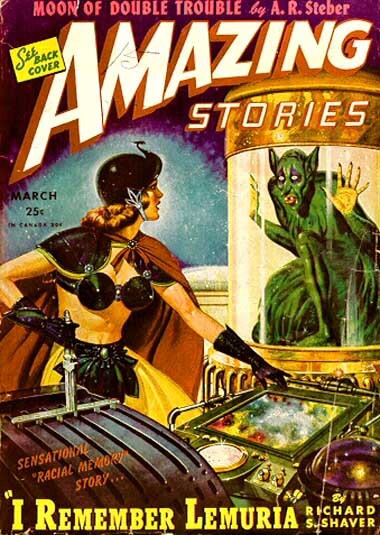
I haven’t actually read any of Shaver’s accounts. Indeed, my knowledge of the various true believers of the Hollow Earth has mostly been acquired secondhand. I probably first heard about the majority of them from Dr. Frank Baxter, whom the wags at Mystery Science Theater 3000 dubbed “the Gesture Professor,” in his introduction to the 1956 Virgil Vogel movie The Mole People.
(I always liked the eponymous mole people themselves, but the movie – and its depiction of a Sumerian civilization that has become trapped underground – is a bit of a snooze.)
Most of my contemporary knowledge of actual Hollow Earth theory, however, comes from one nonfiction book – one with a simple title, and an unusually long subtitle. Originally published in 2005, David Standish’s Hollow Earth bears the absolutely unwieldy subheading “The Long and Curious History of Imagining Strange Lands, Fantastical Creatures, Advanced Civilizations, and Marvelous Machines Below the Earth’s Surface.”
How could I not love that?

I got a copy of Standish’s book at a secondhand book shop years ago, and it helped to reignite my passion for this odd material – and also teach me about its real-world history. While I had read Walden in college, Standish’s book was also the first time I really noticed the Henry David Thoreau quote that serves as one of the two epigraphs in Notes from Underground.
The implied link between the Hollow Earth and our own personal interiority struck me immediately, and stuck in my head for years. I knew that I wanted to write something that could use that quote as an epigraph, and many false starts followed before we got to the place where we are today.
Epigraphs are supposed to help readers get into the right mindset for a book, and for me, epigraphs often come early in the book process, as I get myself in the right mindset, as well. Such was the case here.
In many ways, the two epigraphs in Notes from Underground serve as the two dominant themes that I wanted to explore in the book – first, the Hollow Earth as a reflection of our own interior worlds, as a mirror for our longing, our questions, our hopes, and our fears.
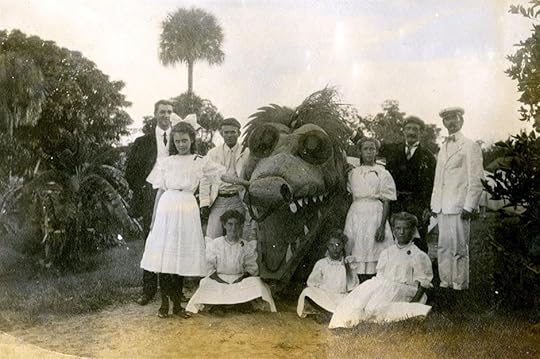
I think that’s true for the people who really believed in the Hollow Earth, too, to some extent, even if they didn’t always realize it. Most early Hollow Earth theory posits it as a more Utopian ideal – a place where things are, or could be, better than they are here on the surface. In Notes from Underground, those Utopian ideals are present, but they have gone to seed, left to rot and ruin and the slow creep of entropy. “Nothing lasts forever, not even forever.”
For many of these true believers, the Hollow Earth was more than an idea – it was something almost like a religion. Indeed, Hollow Earth churches like and yet unlike the one depicted in “Leandra’s Story” really existed, with the best-known among them being Cyrus Teed’s “Koreshan Unity,” the last known member of which passed away as recently as 1982.
Like many of the characters in Notes from Underground, these people longed for something more than the world of the surface. Some of them yearned for it so strongly that it carried them to their graves.
How could that not show up in Notes from Underground, at least a little bit?
September 10, 2025
Hollow Earth Expeditions: Counting the Cats in Zanzibar
“It is not worth the while to go round the world to count the cats in Zanzibar. Yet do this till you can do better, and you may perhaps find some ‘Symmes’ Hole’ by which to get at the inside at last.”
Henry David Thoreau, Walden
I don’t know what my first exposure to the Hollow Earth was. Probably one of the assorted cinematic adaptations of Jules Verne’s Journey to the Center of the Earth or similar fare, released starting in 1959 and watched by me on television when I was a kid, remembering only the monsters – guys in rubber suits or lizards with sails glued to their backs.
If not that, then one of Edgar Rice Burroughs’s Pellucidar novels, a smattering of which were stocked, alongside Tarzan and John Carter of Mars, in my high school library.
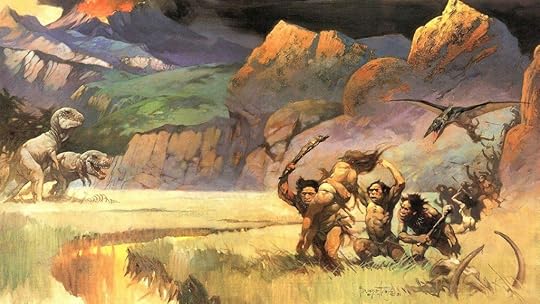
I don’t recall much of either. But the Hollow Earth has always been with me, for as long as I can remember. Not as an article of faith, like many of its believers, nor even as a world often explored in fiction, but simply as a nice thought. Something I was always pleased to have in the back of my mind.
Years ago, I made an analogy about the dinosaurs that were often posited by various pulp fiction writers as dwelling in the Hollow Earth. These dinosaurs were, to me, what a relationship with some sort of divine figure was for many people. Something that may not be real – something, in this case, that I didn’t even believe in – but it made my life better to think that they might be there.
Despite this, I never wrote a Hollow Earth story until I started on the seven story cycle that became Notes from Underground, my latest short story collection – and one unlike any other I have ever published before – which is now up for pre-order from Word Horde and due out in just a few weeks, with a cover reveal today showing off the artwork of Matthew Revert.

In some ways, Notes from Underground is the culmination of a lifelong obsession with the Hollow Earth. In other ways, it’s nothing like the Hollow Earth book I might have imagined I would write, if I had set myself the task. But, like so many things that occur in your writing life, this wasn’t exactly planned – it just sort of happened organically.
There aren’t many dinosaurs in Notes from Underground, but there are no shortage of monsters. Spider-like ghouls, the coeleopteran race that will eventually replace humanity, and other, stranger things. There aren’t many Burroughs-style heroes, either, nor any Verne-style digging machines. There isn’t even much in the way of mushroom forests, more’s the pity. But there are magicians and psychics and lost souls who are looking desperately for something – something that they just might find at the bottom of a Symmes’ Hole.
Here’s how Trevor Henderson, artist and author of Scarewaves, describes it in a very kind blurb: “With Notes from Underground, Orrin Grey uses the fantastic imagery of the high strange and the charming weirdness of pulp adventure stories as gateways to deeper, murkier depths. He tunnels deep into the honeycombed caverns of his characters’ interior lives and shines a light on what lurks there. A wonderful collection quite unlike any I’ve read before.”
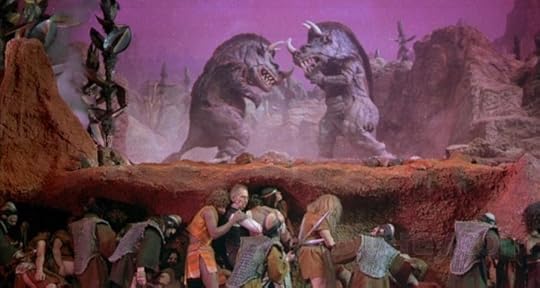
Notes from Underground is also quite unlike anything I’ve written before. Caught somewhere between a short story collection and a short novel, it is made up of seven linked tales, each one of which can be read on its own (indeed, six of the seven were previously published in places as diverse as Pseudopod, Nightmare magazine, and Ellen Datlow’s Best Horror of the Year) but all of which together tell the story of the Hollow Earth itself – its past, its future, and what comes next.
After all, as one of the characters tells another, “Nothing lasts forever, not even forever.”
Tying these stories together is a new novelette, written expressly for this volume, which follows the widow of a stage magician whose husband disappears in the midst of a macabre trick. As she delves into his past to locate him, she finds that there may be an unexpected place waiting for her, too, below the ground…
Notes from Underground is due out from Word Horde on October 14, and is up for pre-order now. Every week, from now until then, I’ll be posting a new installment of Hollow Earth Expeditions, exploring some of the many influences that shaped the stories in Notes from Underground, and my own odd conception of the Hollow Earth.
I hope you’ll join me. We’re about to dig deep.



